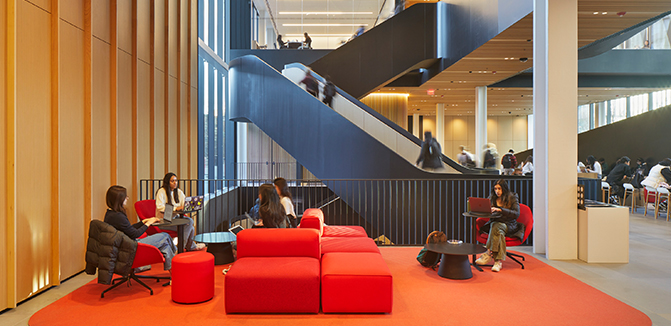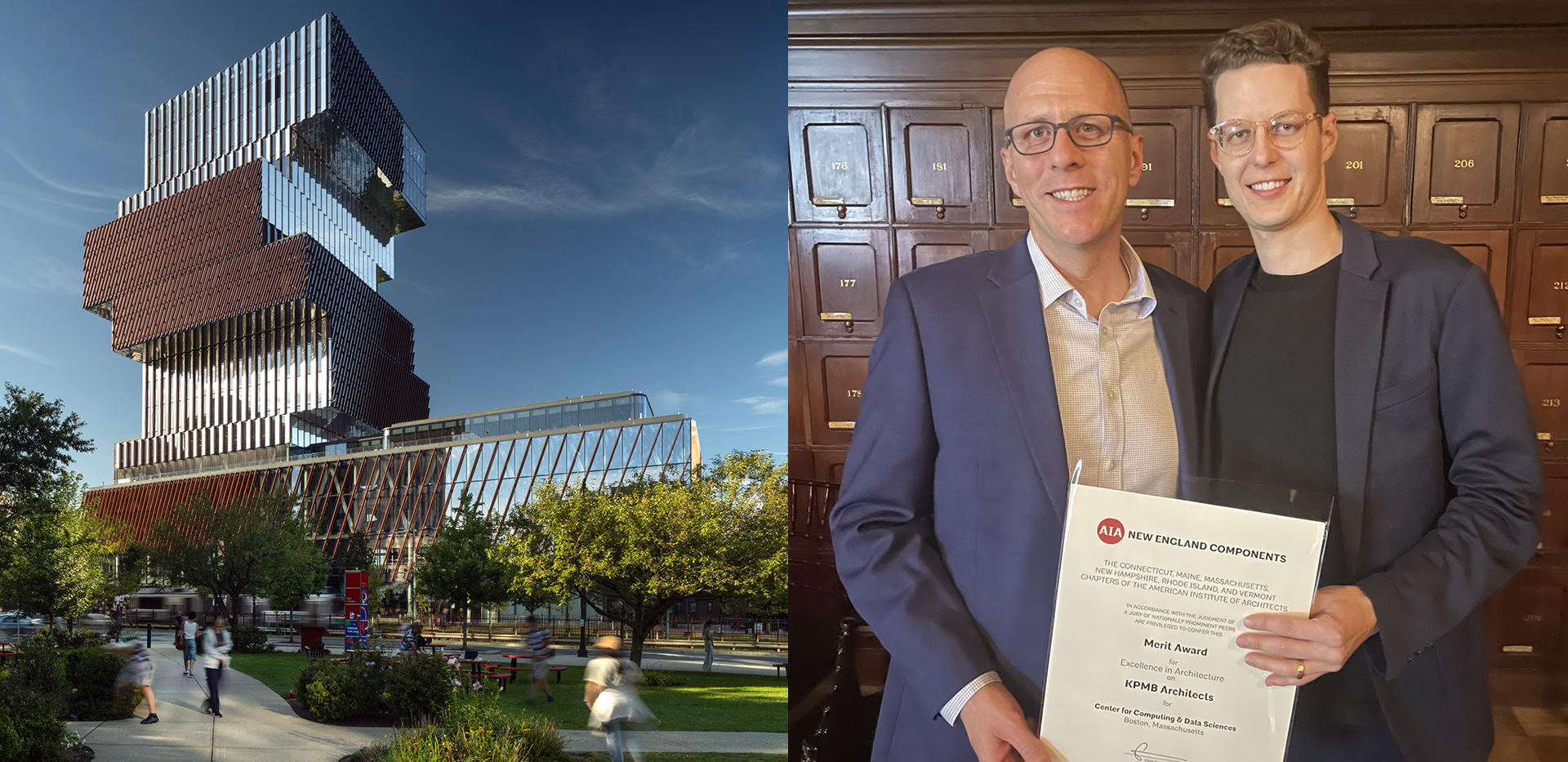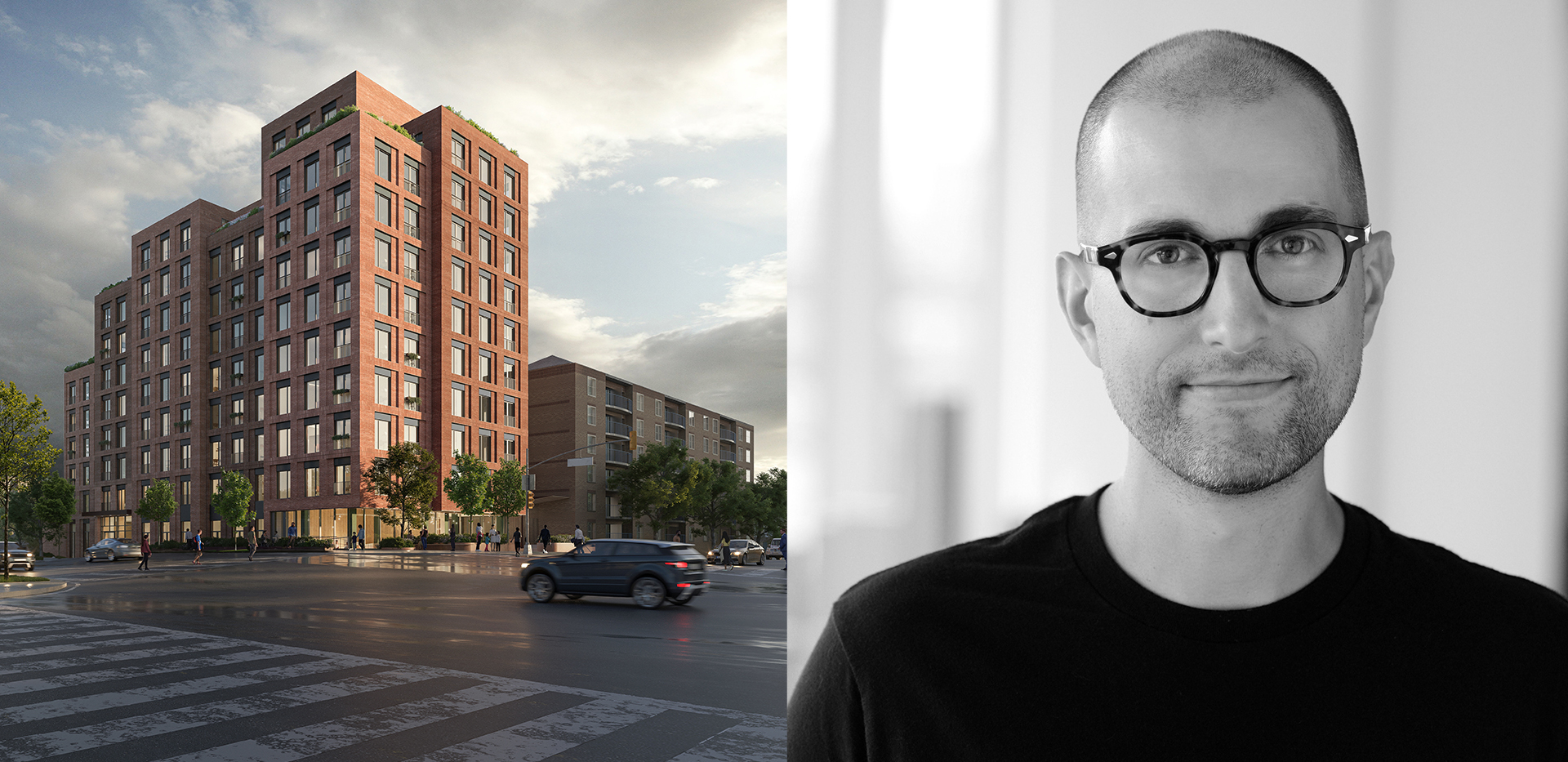Boston University’s Center for Computing & Data Sciences featured in Interior Design magazine

Article content
June 29, 2023
When Boston University put out its call for a design for the new Center for Computing & Data Sciences, it asked for a superb facility for teaching and research in a 21st century university. In its June issue, Interior Design magazine notes that KPMB “met the challenge,” applauding the design of a “human-centered” and welcoming tower.
But the Center is not a traditional tower. At 19 storeys and 345,000 square feet, it is the largest operationally fossil-fuel free building in Boston. It is also a vertical campus, crafted to foster collaboration among thousands of students, faculty and staff from different departments, while still preserving the distinct identities of each department.
Inside the Center, the application of human-centered design is clear. Colourful lounges on each level of the building’s five-storey podium, a central atrium with a ribbon-like staircase, a café and outdoor terraces that double as green roofs provide everyone on campus with numerous spaces for collaboration and connection.
Each floor is a burst of colour — custom ottomans, swivel chairs, area rugs, and modular sofas are awash in bright monochrome colours including purple, green, yellow, and Boston University’s signature red.
The use of colour is intentional and aids in wayfinding and accessibility. As you move up the building, each corner is the same colour. For instance, corners decorated with blue furnishings face the Charles River and green corners face Fenway Park, allowing people to easily orient themselves in the building. As partner and design lead Paulo Rocha says, “The energy the building spins off toward the city is mirrored at a human scale inside it.”
Whiteboard walls placed throughout the core encourage the sharing of ideas and floor-to-ceiling windows offer spectacular, uninterrupted river views from three sides of the building and illuminate classrooms and collaboration spaces with natural light.
Related News
KPMB at AZURE’s Human/Nature conference
October 21, 2024KPMB at 2024 WoodWorks Summit
October 18, 2024
)
)
)